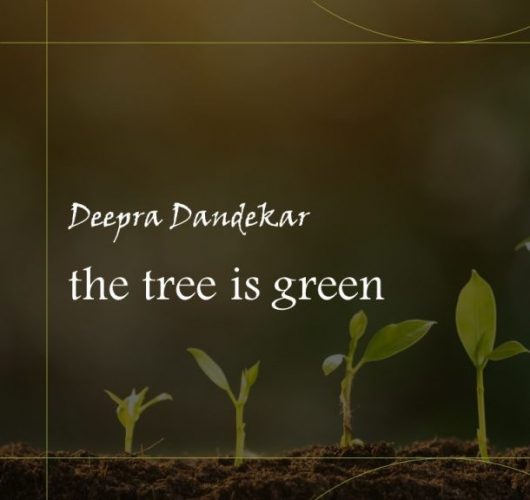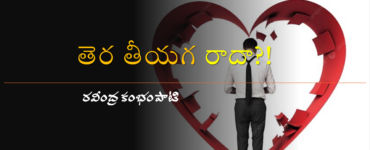I worked briefly between the years 2000 and 2002 on an ActionAid project that focussed on human rights and the mental health of women inmates incarcerated within state institutions, especially in Maharashtra. Focusing mostly on Pune, I conducted interviews for this project with women suffering from depression at Yerawada Central Jail. Women inmates were collectively locked into large barrack rooms with cement platform beds and two toilets, spending only a few hours of the morning, afternoon, and evening in the open air, during which time I recorded their interviews.
As I started work, a prisoner called Malati (name changed) was put in charge of me, to help me with interviews. Malati was on a life-imprisonment sentence (fourteen years in India for women) and had already been at Yerawada for eleven years. She knew almost everyone inside. The first thing Malati did, was telling me about her life sentence so that no one would gossip about her to me. Malati told me she had murdered her husband in a premeditated act and had surrendered, after which she had been sentenced to life imprisonment. But meanwhile, during her imprisonment, she had also finished a postgraduate degree in law. Moreover, she had a tentative job offer from an NGO that worked for prison inmate rehabilitation.
Though a life sentence usually lasts fourteen years, the number of years spent as an undertrial is usually deducted from the sentence. The travesty in India is that women often spend far longer in Jails as undertrials, than the requisite time of their sentence, and there is no system to address this problem or compensate for it. While this is due to the overburdening of the judiciary, Malati said, inmates committed further crimes to continue living inside the safety of prisons, and to avoid release. Life was good inside the prison – women had a place to sleep, some friendships, three square meals a day, and a routine everyday life that, over time, provided stability. They no longer had families or a future outside. After spending many years behind bars, they became too independent and individualistic, and lost touch with the real world. Instead, they became fierce, defending themselves over petty matters, and stridently claiming their rights. Their old social lives and relationships truncated over time. At the time they started serving as lifers, many women were already middle-aged.
They were too old to be meaningfully employed at the time of their release, and also not strong enough for manual labour. The Jail provided women free medical treatment inside, and this stopped abruptly at release. In the outside world, they were alone, old, poor, destitute, and faced competition for all services. The biggest problem was the stigma. Once released, they faced tremendous bullying and suspicion outside. They were judged as persons innately prone to violence and mental instability, and people took advantage of them, showing only voyeuristic interest in them under the garb of sympathy. They made scapegoats out of them, blaming them for subsequent crimes committed by others. Malati said, women inmates became afraid of the outside world. There was no pension, and there was no rehabilitation. Many became beggars.
Malati knew she was lucky. She was young when she had become a lifer, and had already finished eleven years, in which she had acquired an education. She had also been recommended by the Jail Superintendent for sentence commuting for up to twelve years, on account of her good behaviour. And indeed, Malati was cheerful, and efficient, reputed as an asset to the Jailor. She managed official and administrative tasks and she was trusted with the key to the provisions shed, strung on a chain around her waist. Malati was a leader. She said, she had finally found her confidence and happiness inside the Jail – a janam within a janam (a life inside a life). Though she was acutely aware of her privilege, and the somewhat exceptional nature of her case, she also felt that uniform narratives about incarcerated women and their unhappiness – Bollywood movies like Bandini were somewhat exaggerated. Malati believed freedom to be a concept inside the human mind, and hence, something that could be felt anywhere in the world. It was, in fact, the outside world that was the real prison, she said. In the outside world, women were trapped within strict, cruel, and unsympathetic homes, families, and relationships that exploited them, made them work to death without ever thanking them. They were trapped within notions of false male honour, and forced to remain silent.
Describing her own case, Malati confided that she had been trapped in a violent marriage too, with an abusive husband. One day, sick of the thrashing, she lay in wait for him inside the door, axe in hand. When he came in through, she simply, wordlessly, hacked him to death. Malati said that she had only felt relief at that moment of hacking. There was no question of running away. She just sat next to the body till the police arrived. Real freedom for many women like her began inside the prison, Malati continued, where apart from their sentences, women became individuals for the first time. Home was a concept in the mind, and women were foolish to crave it, because they also knew that home was the place where real crimes against them began – where violence was provoked. These families they craved, cared nothing for them. It was a strange inversion! That the world was a prison, and the prison, a place of freedom. No one judged you here, inside. Here, everyone was criminal, and everyone was also, at the same time innocent! Malati showed me an old wedding photograph. I saw a thin and strained woman with overlarge eyes, weighed down by an enormous Mangalsutra next to a handsome man. Malati, seeing my surprise, laughed, for she was quite plump now. Yes, she said, she had indeed put on weight – eating, sleeping, working, and studying in peace – karaagaar maanavla! Prison had ended up suiting her!
Doesn’t the mind change? I asked. Isn’t a certain boundary broken when one murders – once the fear is gone, isn’t it easy to murder again? Malati contemplated. It depended on what killing really meant for each individual. Was it a moral boundary? Looking at it that way – the exact way the prison-system wanted you to think, was perhaps a religious perspective, and not too helpful. Killing always had a context, and that was more crucial than the act of killing itself, which was banal. Stand all alone in a clear beam of light in your mind, Malati said. The person standing in this light only wants one thing – dignified survival. Ask yourself: Does this person deserve it? Many people who answer no, have not faced the survival question, or even treat it hypothetically – try to gain moral superiority out of fear. Once you understand, that in that split second of the context, you had to kill to survive, the rest becomes unremarkable. Malati said she had a choice, even in that split second, before she hacked her husband down. She could have lowered her axe. But she did not do so.
In that moment, there was only her own survival at stake. And only relief afterwards. These were separate domains – morality and survival. But I remained unconvinced. Was everyone innocent then? What about the Nazis? Malati agreed; there were indeed some women who killed for fun, power, and adventure. And even hardened lifers like herself were afraid of them. She pointed to two women sitting inside the solitary cells of the compound, looking out listlessly through the bars. They were not treated like the others, and put into barracks. They were never let out – not because they were dangerous, but because they would not be safe among the other women in the Jail compound. The Jail compound was also a society, and other women would attack or shun these two, making their lives miserable, and perhaps even driving them to suicide. That would interfere with the judicial process.
I looked at the two seemingly ordinary women – the two sisters, and serial killers Seema Gavit and Renuka Shinde. They had been arrested along with their mother Anjanabai Gavit, the mastermind behind their crimes in the late 1990s. Anjanabai had died in prison, but these two were still awaiting death sentences. They were not ordinary lifers; they were ‘deathers’ who had killed for fun. The three had been convicted of kidnapping thirteen children and for killing nine out of these in the most gruesome manner – even going off to watch a movie, carrying a bag full of children’s severed body parts. Their death sentence was upheld by all the courts in the country, and their mercy petition had been repeatedly rejected. They spoke to no-one; and no-one spoke to them. And what would they do, even if they were released? Would society let them live? Even women in the Jail compound would not let them live. Pointing to their cells from a distance Malti answered my question: Not everyone was innocent.
What about forgiveness, I had asked. Malati said, she was angry with her husband, not just for relentlessly thrashing her for years, once almost to death – something she had repaid him for, but for not even ever feeling guilty for it. She was left shouldering the entire emotional burden of the guilt – pity for him, and the guilt of having ended his life, even if for her own survival, and guilt for even wanting to survive as his wife and as a woman in society. Her mother had said, it would have been better to have died at his hands, rather than bring shame upon herself and their family.
Malati said she was ambivalent about returning home, and she was not sure they wanted her either. She would seek a job elsewhere, perhaps remarry an ex-convict, or manage on her own. Forgiveness for women in our society is really far away, she said. How can I expect others to do it when it is so difficult for me! The day I stop dreaming of him, the day images of his body stop flashing across my mind … that day I will know I have forgiven myself.
*









Add comment